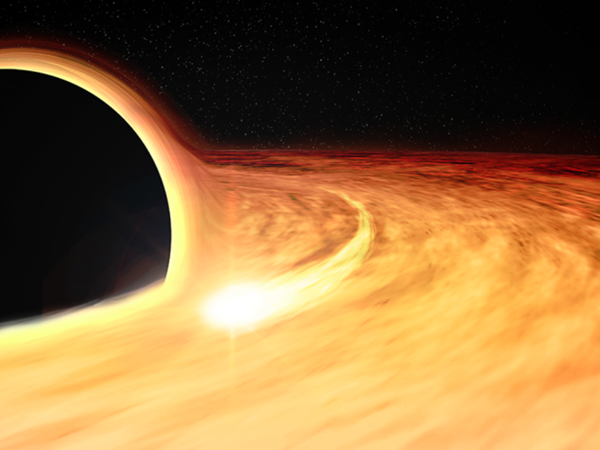Imagine yourself on a spaceship traveling into a black hole. You could pass through the event horizon and not even realize it because the horizon is not a physical boundary. It is a radius inside which you will simply not be able to escape the immense gravitational pull, no matter how powerful your spaceship’s engines are.
Now imagine your spaceship is just outside the horizon, and it is firing its engines to hold itself exactly in one location. A distant observer would observe your spaceship going in circles around the black hole because the space-time in which your ship is sitting is being dragged around. This wild and non-intuitive effect applies to space-time around any massive object with angular momentum, but for spinning black holes, the effects are pronounced and extreme.
For a regular object — say, a solid sphere — angular momentum directly relates to a linear speed at the surface. You would measure this speed by marking a specific location on the sphere’s surface and counting the time it takes for that spot to complete one full rotation (t). Then you can calculate the distance the marked location moved during that time (d). The d-t ratio gives you the speed at which that point on the surface is spinning/moving.
You can construct a similar notion of the speed at which space-time is being dragged around at the event horizon as seen by an observer on Earth. However, unlike a sphere, a black hole’s event horizon is not a physical boundary. One way to measure the speed at the horizon is to go back to the imaginary spaceship just outside the horizon, firing its engines to stay still. Assume the ship is emitting a radial signal outward, similar to a lighthouse sending out a beam of light. As the spaceship gets dragged around, a distant observer can measure the time it takes for it to complete one full rotation and the distance traveled by it during that time. Similar to a regular sphere, the d-t ratio will give a linear speed at which the spaceship (and thus the space-time) at the event horizon appears to be whirled around by the black hole’s immense gravity.










